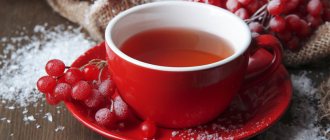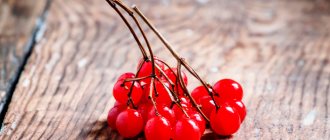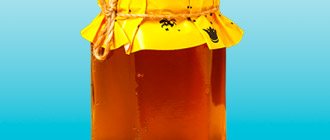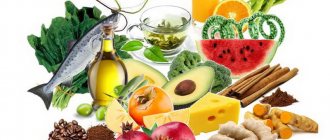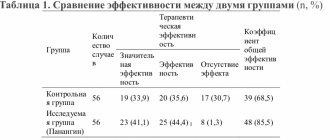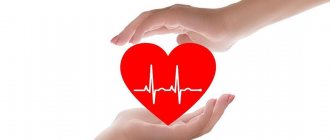Treatment of cardiac arrhythmia with folk remedies
Do not panic if your doctor has diagnosed you with atrial fibrillation, because there are treatment methods with folk remedies. It can be:
- viburnum decoction;
- hawthorn tincture;
- calendula infusion;
- decoction of valerian root;
- lemon balm tincture;
- grated celery;
- grated onion with apple.
- Treatment of cardiac arrhythmia in men with folk remedies
How to cure cardiac arrhythmia with folk remedies in a man? It's very simple: mix alcohol tinctures of valerian, hawthorn and motherwort. Infuse for 24 hours, take one spoon three times a day.
- Treatment of cardiac arrhythmia in women with folk remedies
If you are interested in folk remedies for atrial fibrillation in women, we recommend trying the following recipe: cut 0.5 kilograms of lemons, pour honey and add 20 apricot kernels. This drink is taken one tablespoon 2 times a day.
Buy viburnum (dried berries) on our website
Cardiac ischemia
Causes and occurrence of IHD
According to the modern classification, coronary artery disease includes sudden death, angina pectoris and myocardial infarction. But this article will only consider ischemic heart disease in the manifestations of angina pectoris.
Coronary disease is a group of heart diseases (especially ischemic and coronary insufficiency) that arise as a result of impaired blood flow to the myocardium due to narrowing of the coronary (feeding the heart) vessels (these are 3 large vessels, similar to the 3 teeth of the crown, which is why they received name coronary, or coronary). Normally, the surface of these vessels is smooth and blood flow to the heart is not impeded.
The term ischemia comes from the combination of the Greek words isho, which means “to hold back, stop,” and haima, which means “blood.” In this condition, the blood supply to any part of the heart is disrupted, and a discrepancy appears between the needs of the heart (myocardium) for oxygen and the level of cardiac blood flow and incoming oxygen.
This condition can be acute or chronic, temporary (reversible) or irreversible. As a result of long-term, irreversible changes in the myocardium, heart cells are damaged and die. IHD manifests itself when the narrowing of the coronary vessels reaches 50%. If the narrowing approaches 70-80%, then severe attacks of angina occur. In addition to atherosclerosis of the coronary arteries, a number of factors are important in the occurrence of coronary artery disease - the condition of the blood vessels and the amount of chemicals produced by the internal walls of blood vessels.
Atherosclerosis is a chronic disease that causes damage to the arteries. It is expressed in the fact that fats and calcium salts are deposited on the inner wall of the vessel, and the degeneration of muscle tissue into connective tissue develops. As a result, the wall of the vessel becomes denser, its lumen narrows, and blood flow is disrupted. This causes adverse changes in organs, leading to various diseases.
Atherosclerosis is one of the most common modern diseases. Its prevalence is high among residents of Europe and North America, and in the countries of the East, Africa, and South America it is much less common.
Men get sick more often than women, and atherosclerosis occurs about 10 years earlier in them. This difference is due to lifestyle, genetic characteristics, and hormonal factors.
Over the past decades, mortality from coronary artery disease caused by atherosclerosis has increased significantly. The occurrence of atherosclerosis is caused by a combination of many factors called risk factors. These include: arterial hypertension, smoking, prolonged emotional stress, and metabolic characteristics in the body.
The mechanism of occurrence of atherosclerosis: the inner lining of the vessel is damaged, platelets rush to the site of damage, settle there, become covered with connective tissue, followed by the addition of lipids.
Cholesterol is one of several fat-like compounds found in human blood and tissues. It is produced by liver cells. Cholesterol exists in the body in several forms. One of them is high-density compounds. This part is very important as it protects the body from atherosclerosis, removes cholesterol from body tissues and artery walls, and returns it to the liver for reuse or elimination from the body. The other part of cholesterol is low-density compounds. It plays a role in the formation of plaques and the development of atherosclerosis. Gradually, the process progresses, cracks and ulcers form on the plaques, and blood clots form on their surface with the help of platelets. They close the lumen of the artery. Thrombosis occurs. The most dangerous complication in this is the detachment of a blood clot.
There are more than 30 factors contributing to the occurrence of IHD. The main ones are increased blood pressure, increased cholesterol levels in the blood, smoking, sedentary lifestyle, frequent alcohol consumption, heredity (presence of cardiovascular diseases in close relatives), belonging to male gender, the objective process of aging of the body, overwork, irrational work and rest, poor nutrition, stressful situations. Stress these days greatly increases the risk of coronary artery disease. Under stress, the human body produces so-called stress hormones. In this process, a large amount of vitamins and nutrients is consumed.
It is also very important to change the composition of the blood - accelerating blood clotting, which leads to platelet aggregation and ultimately to the formation of plaques and blood clots.
Symptoms of coronary heart disease
Angina pectoris is the most important and common manifestation of coronary artery disease. This is a common disease, the main symptom of which is pain behind the sternum of a pressing or squeezing nature. The pain spreads, radiating to the left arm, shoulder, shoulder blade, often to the neck and lower jaw. An attack of angina pectoris can manifest itself in the form of discomfort in the chest - burning, heaviness, fullness. A characteristic symptom of angina is the appearance of pain in the chest when the patient leaves a warm room into a cold one. Deterioration is often observed in the autumn-winter period, with changes in atmospheric pressure. Pain occurs during physical activity (in the initial stages of the disease - so-called angina pectoris) and stops with rest or after taking nitroglycerin. With excitement, pain appears without connection with physical stress. Attacks of pain can occur at night, after eating, with bloating and a high position of the diaphragm. The duration of an angina attack is almost always more than 1 minute and less than 15 minutes. Its duration also depends on the patient’s behavior. If you stop exercising and take nitroglycerin, the attack will be shorter and less intense.
One of the signs of angina is that the pain increases when lying down and decreases when the patient sits or stands. This occurs because the supine position increases the flow of venous blood to the heart and the myocardium requires more oxygen. The strength of the attack varies. At this time, the pulse is usually slow and rhythmic, but sometimes it can be accelerated (tachycardia). Blood pressure may also increase. Attacks may be rare (once a week or less), may not recur for several months, or, conversely, become more frequent and prolonged.
Diagnosis of IHD
In the diagnosis of IHD, questioning the patient, finding out the causes of the disease, electrocardiographic examination, which is carried out repeatedly, tests with dosed physical activity (bicycle ergometry), and drug tests are very important.
One of the modern methods carried out in cardiology hospitals is radiographic examination of the vessels of the heart, i.e. the introduction of a substance into the blood, thanks to which it is possible to see the heart and large vessels and determine the nature, location of the lesion, and the extent of the process. This method is called "coronary angiography".
Treatment of coronary artery disease
Folk remedies for the treatment of coronary heart disease
- Fennel. 10 g of fennel fruits are poured into a glass of boiling water, heated in a water bath, cooled, filtered, squeezed and the volume is adjusted to 200 ml. Take 1 tablespoon 3-4 times a day for coronary insufficiency.
- Horseradish with honey. For coronary heart disease in the morning, 1 hour before meals, mix 1 teaspoon of grated horseradish with 1 teaspoon of honey, preferably linden. Drink only water. Mix only before use. Take the mixture for 1-1.5 months, preferably in spring and autumn.
- Egg and sour cream. For good heart function, you should prepare a mixture consisting of 2 egg whites, beaten with 2 teaspoons of sour cream and 1 teaspoon of honey. Eat on an empty stomach.
- Swamp dry grass. For angina pectoris, 10 g of marsh marsh herb is poured with a glass of boiling water, heated in a water bath for 15 minutes, cooled for 45 minutes, filtered, squeezed and the volume is adjusted to 200 ml. Drink 1/3-1/2 glass after meals.
- Elixir for the heart. We offer a recipe for an elixir that helps with heart diseases such as angina and ischemia, as well as atherosclerosis and hypertension. To obtain the elixir, you need to prepare 2 compositions: natural honey (preferably May honey) – 500 g, 40% vodka – 500 g; Mix both components, heat over moderate heat (stirring constantly) until a milky film forms on the surface of the mixture, then remove from heat and let stand; motherwort, cudweed, valerian (crushed root), knotweed, chamomile. Take a pinch of each herb, brew 1 liter of boiling water and let it sit for half an hour. Then strain through several layers of gauze. Mix the first composition with the second. After this, put the medicine in a dark place for 3 days. Take a teaspoon 2 times a day for the first week (morning and evening). Starting from the second week, take a tablespoon 2 times a day until everything is used up. After a 7-10 day break, prepare the medicine again and continue treatment, the course of which is 1 year.
- Dill. Grind the dill herb or its seeds, brew 1 tablespoon in 1.5 cups of boiling water, let it brew. Drink the prepared infusion throughout the day for angina pectoris.
- Hawthorn (infusion). Brew a tablespoon of dried hawthorn fruit with 200 ml of boiling water, leave for 2 hours in a warm place (can be brewed in a thermos), strain. Take 1-2 tablespoons 3-4 times a day before meals.
- Hawthorn (tea). Brew hawthorn fruits as tea. The number of fruits does not matter; the color of the infusion should be similar to medium-strength tea. Drink with sugar. Use for heart diseases.
- Hawthorn with motherwort. Russian healers considered the treatment of angina pectoris with hawthorn decoction to be the best remedy. Pour 6 tablespoons of hawthorn fruit and 6 tablespoons of motherwort into 7 cups of boiling water. Do not boil. Wrap the pan with hawthorn and motherwort warmly and leave to steep for a day. Strain and squeeze the swollen berries through cheesecloth. Store the prepared decoction in a cool place. Take a glass 3 times a day. Do not sweeten. To improve the taste, you can mix it with a decoction of rosehip, brewed in the same way.
- Garlic with honey and lemon. For angina with shortness of breath, it is recommended to take garlic with honey and lemon. Take 1 liter of honey, 10 lemons, 5 heads of garlic. Squeeze the juice out of the lemons, peel the garlic, rinse and grate (you can put it through a meat grinder). Mix everything and leave covered in a cool place for a week. Take 4 teaspoons 1 time per day, and take it slowly, stopping for 1 minute between each spoonful.
- Cinquefoil goose. Pour 2-4 tablespoons of cinquefoil herb with a glass of boiling water and leave until cool. Take 1/3 cup 3 times a day before meals for angina pectoris and migraines.
- Motherwort cordial. Pour 15 g of motherwort herb with a glass of boiling water and leave until cool. Take a tablespoon 3-4 times a day before meals for angina, myocarditis, cardioneurosis.
- Lovage officinalis. 40 g of dry crushed roots of Lovage, pour 1 liter of water, boil for 7-8 minutes over low heat, leave in a warm place for at least 20 minutes. Take the decoction only freshly prepared, in 4 doses per day.
- Wormwood. Pour a glass of boiling water over a coffee spoon of wormwood herb, leave for 2 hours, strain. Drink 1 cup of coffee 2 times a day, morning and evening, before meals for a month. The second and third months drink 1 cup of coffee only in the morning.
- Astragalus fusiflora. Pour 1-2 tablespoons of Astragalus fluffy-flowered herb with a glass of boiling water, leave for 1 hour, strain. Drink 1-2 tablespoons 3-5 times a day for chronic cardiovascular failure, accompanied by tachycardia and angina.
- Rosehip (fruit). 2 tbsp. l. rose hips, 350 ml vodka. Finely crush the rose hips, pour into a 0.5 liter glass bottle, and fill with vodka. Infuse in a place protected from light for 2 weeks, shake daily. Take 20 drops on a piece of sugar 3 times a day, regardless of meals.
- Horseradish. 5 g fresh horseradish roots. Pour crushed horseradish roots into a thermos with 1 cup of boiling water, leave for 2 hours. You don’t need to strain. Use the infusion for inhalation.
- Nettle (color). 1 tsp. nettle flowers. Pour 1 cup of boiling water over nettle flowers. Take 0.5 cups 2 times a day: in the morning on an empty stomach and in the evening before bed.
- Strawberry (leaf). 20 g strawberry leaves. Pour the raw material with 1 cup of boiling water, boil for 10 minutes, then leave for 2 hours, strain, squeeze out the leaves, bring to the original volume with boiled water. Take 1 tbsp. l. 3-4 times a day, regardless of meals.
- Garlic. 50 g garlic, 1 glass of vodka. Chop the garlic, add vodka, leave in a warm place for 3 days. Take 3 times a day, 8-10 drops in 1 tsp. cold boiled water 3 times a day, regardless of meals.
- Garlic. 350 g of garlic, 200 ml of medical alcohol with a strength of 96%. Finely chop the peeled garlic and grind in a container with a wooden spoon. Take 200 g of this mass from below along with the resulting juice, place it in a glass vessel, fill it with alcohol, and seal tightly. Store the resulting tincture in the refrigerator for no more than 12 days. Take 20 minutes before meals, after mixing with 1/4 glass of cold milk, for 10 days according to the following scheme: on the 1st day, 1 drop in the morning, 2 drops at lunch, 3 drops before dinner. On the 2nd, 3rd, 4th and 5th day, add 3 drops per dose. From the 6th to the 10th day, reduce by 3 drops per dose.
Fees
- 1 tsp. mistletoe leaves, 2 tbsp. l. buckwheat flowers, 1 cup boiling water. 1 tsp. pour boiling water over the collection, put in a warm place overnight, strain in the morning. Take 2 tbsp. l. 20 minutes before meals 3 times a day.
- 1 part of coltsfoot leaves, 2 parts of dill fruits, jaundice herb, reed sunflower flowers, 1 liter of boiling water. Mix all components thoroughly and grind. 1 tbsp. l. Pour boiling water over the resulting mixture and leave for 1 hour. Strain the resulting infusion and squeeze out the raw materials. Take 1/2 cup 5-6 times a day for a month, regardless of meals.
- 40 g of lovage herb, crushed corn roots, 1 liter of boiled water. Mix the ingredients and chop. 2 tbsp. l. pour boiled water over the resulting mixture, bring to a boil, boil for 7-8 minutes, pour into a thermos and leave for 40 minutes. Strain the resulting broth and squeeze out the raw materials. Take 1/2 cup 3 times a day 30 minutes after meals. Conduct 3 courses of 7 days at a five-day interval.
- 1 part of kelp thallus, 2 parts of corn silk, horsetail herb, sundew herb, 1 liter of boiling water. Mix the ingredients thoroughly and chop. 3 tbsp. l. Place the resulting mixture in an enamel bowl and pour 1 liter of boiling water. Place in a water bath and bring to a boil. Boil for 1 minute. Pour into a thermos and leave for 1 hour. Strain the resulting infusion and squeeze out the raw materials. Take 1/2 cup 6 times a day, preferably after meals, for 2 weeks.
- 20 g each of blue cornflower flowers, birch buds, chopped rhizomes with roots of elecampane, corn silk, bearberry leaves, buckwheat flowers, 1 cup of boiling water. Mix all ingredients thoroughly and chop. 2 tbsp. l. pour the collection into an enamel bowl, pour 1 cup of boiling water, put in a water bath, bring to a boil. Leave until cool. Strain the resulting broth, squeeze out the raw materials, and bring to the original volume with boiled water. Take 1/2 cup 2 times a day 30 minutes before meals. It is not recommended to use at night.
- 1 part each of tea kopeck root, linden flowers, raspberry fruits, ground flaxseed, 2 cups of boiling water. Mix all ingredients thoroughly and chop. 4 tbsp. l. Place the resulting collection in an enamel bowl, pour boiling water, place in a water bath and keep for 30 minutes. Leave until cool. Strain the resulting broth, squeeze out the raw materials, and bring with boiled water to the original volume. Take 1 glass 2 times a day immediately 5-7 minutes before meals. Use within a month. If the effectiveness is insufficient, repeat the course after a two-week break.
- 20 g horsetail herb, 30 g knotweed herb, 50 g hawthorn flowers, 1 glass of boiling water. Mix the crushed raw materials. 2 tbsp. l. pour boiling water over the collection. Stir and leave until cool. Strain the resulting infusion and squeeze out the raw materials. Drink during the day.
- 2 tbsp. l. chopped horseradish root, 1 glass of honey, 1 glass of freshly prepared carrot juice, 1 glass of boiled water. Pour horseradish with water and leave for a day. Add honey and carrot juice. Mix. Store in a cool place. Take 1 tbsp. l. on an empty stomach 1 hour before meals or 1.5-2 hours after meals.
- 2 tbsp. l. crushed blue cyanosis roots. Pour 100 ml of boiling water over the raw material and keep it on low heat for 10 minutes. Leave for 15 minutes, then strain and bring to the original volume with boiled water. Take 1 tbsp. l. 5 times a day after meals. Last time take at night.
- The following ingredients are selected: cudweed (grass) - 10 g, rose hips (fruits) - 15 g, birch (leaves) - 10 g, mint (leaves) - 10 g, carrots (seeds) - 10 g, eleutherococcus (root) - 15 g, senna (leaves) – 10 g, kidney tea (herb) – 10 g, burdock (root) – 10 g. Two tablespoons of the mixture are poured with a glass of boiling water, left in a water bath for 20 minutes, cooled, filtered, squeezed and bring the volume to 200 ml. Drink 1/3 glass 3 times a day after meals for angina pectoris.
- For coronary insufficiency (insufficient blood circulation), take 100 g of motherwort grass, chamomile inflorescences and hawthorn flowers, 50 g of birch leaves, hernia and heather grass, wheatgrass rhizomes, horse chestnut flowers. Grind the dry mixture and pour 1 teaspoon with 1 cup of boiling water. Leave, covered, for 20-30 minutes, then strain. Take the decoction warm, 1 glass in the morning and evening before bed.
- An infusion is prepared from lemon balm (leaves) - 15 g, caraway (fruit) - 10 g, periwinkle (herb) - 10 g, valerian (root) - 15 g, hawthorn (flowers) - 20 g, mistletoe (leaves) - 30 d. Pour a tablespoon of the mixture into a glass of boiling water and leave for 2 hours, filter. Drink 2 glasses a day - morning and evening for heart pain.
- To prevent coronary heart disease, you can take a drink made from elecampane root, honey and oats. You will need 70 g of elecampane roots, 30 g of honey, 50 g of oats and 0.5 liters of raw water. Sort and rinse the oats, pour cold water over them, bring to a boil, remove from heat and leave for 3-4 hours. Pour crushed elecampane roots into oatmeal broth, boil and leave for 2 hours. Then strain and add honey. Drink 1/2 glass 2-3 times a day before meals.
Traditional treatments for coronary heart disease
Treatment of coronary artery disease is a comprehensive program.
It includes methods of traditional therapy prescribed by therapists and cardiologists, and methods of alternative, traditional medicine.
A mandatory component of treatment is the fight against risk factors. It is necessary to normalize the patient’s lifestyle, eliminate physical inactivity, eliminate bad habits, adhere to a certain diet, and try to avoid worries and emotional overload.
Medical nutrition
The list of products needed by patients with this disease must include raisins, honey, nuts of any kind, raw pumpkin, pumpkin seeds, seaweed, cottage cheese, strawberries, peas, soybeans, soybean oil and flour, eggplants, lemons and oranges with zest, rose hips in the form of a drink, gooseberries, cranberries. The content of proteins, fats and carbohydrates should be in a ratio of 1:1:4.
If you are overweight, it is important to reduce the calorie content of your food. It is necessary to exclude fatty meat (especially lamb and pork), hard margarine, and butter from the diet, replacing it with vegetable oil, i.e., it is necessary to reduce the content of saturated fatty acids in the foods consumed, which are rich in animal fats that contribute to the formation of cholesterol, and increase amount of vegetable fats. In addition, you need to provide the body with an increased amount of vitamins and microelements.
Medications
Drug therapy includes two main groups of drugs. This is, firstly, nitroglycerin and its derivatives of longer action (they relieve spasms and dilate coronary vessels, thereby facilitating access of blood and oxygen to the heart). Another group is drugs that help improve blood composition (in this case, reducing coagulation and preventing the formation of blood clots). The simplest drug among them is aspirin (acetylsalicylic acid), prescribed according to a specific regimen. In addition, in some cases, medications are recommended that reduce the formation of cholesterol in the blood and inhibit its absorption in the intestines. Drugs that accelerate metabolism and remove lipids from the body are also used.
The administration of vitamins E and P is very useful. It is more advisable to combine them with ascorbic acid.
It must be remembered that all pharmacological drugs must be prescribed by a doctor. Self-medication with these drugs is unacceptable.
Physical activity, exercise therapy
In addition to the above remedies, physical training is very important in the treatment and rehabilitation of patients with coronary artery disease.
At the initial manifestations of the disease, running, swimming, skiing, cycling, i.e., cyclic physical activity, are indicated.
They should be carried out during periods outside of exacerbation of the disease. For more severe forms of IHD, physical activity is recommended in the form of complexes of therapeutic exercises. The physical therapy complex should be selected by a physical therapy doctor taking into account the patient’s condition. Classes are conducted by a physical therapy instructor in a group setting in a hospital or clinic under the supervision of a doctor. It is necessary to measure your pulse before, during and after exercise. Typically, these complexes include exercises in the initial position of standing, sitting (for patients over 50 years of age), walking, exercises for the upper and lower extremities using a gymnastic stick, breathing exercises and stretching. Exercises are performed at a slow pace, smoothly, with a small range of movements. Self-massage of the limbs can be used to “unload” the work of the heart. This is done to facilitate the outflow of blood from the periphery to the center. The simplest massage techniques: stroking, rubbing, kneading.
After a certain course of physical therapy in a health care facility, the patient can independently perform these exercises at home.
Physiotherapy for coronary artery disease
When treating patients with coronary artery disease, we must not forget about the use of physical factors (methods of hardware physiotherapy). The type of physiotherapeutic treatment is selected by a physiotherapist.
In the absence of contraindications (such as progressive angina, persistent pain, rest angina, increased blood pressure, the presence of arrhythmias), balneotherapy sessions are used - carbon dioxide, radon, chloride and iodine-bromine therapeutic baths. In patients with more severe angina, these effects are used sparingly - in the form of four-chamber baths. Electrosleep, galvanic collar, electrophoresis of painkillers and sedatives give a good calming effect.
In the absence of contraindications, combinations of therapeutic baths and hardware physiotherapy can be used. In specialized cardiology clinics and hospital departments, the method of laser therapy with various types of laser radiation is widely used.
Folk remedies that strengthen the heart
You can strengthen the cardiac muscle, heart and blood vessels with such folk remedies as:
- infusion of dill and parsley;
- hawthorn infusion;
- motherwort tincture;
- honey syrup with garlic;
- ground walnuts.
Advice! For the best effect, use decoctions of lemon balm, St. John's wort, and thyme.
Cooking
Infusions are prepared from dried and crushed parts of plants. The required amount of raw materials is placed in an enamel or porcelain bowl, filled with boiled or distilled water and brought to a boil. Boil over low heat for no more than 10–15 minutes, infuse for at least 45 minutes until completely cooled, then filter, and squeeze out the remaining plant mass and add water until the required volume of infusion is obtained.
A more convenient way to prepare the infusion using a thermos: 1–2 tbsp. spoons of raw materials are poured into a thermos in the evening, poured with two glasses of boiling water and left overnight. The next day, take the strained infusion in 3-4 warm doses. The infusion is stored in a thermos for no more than a day.
Juices are obtained using a grater, meat grinder or juicer from fresh plants. The resulting pulp is squeezed out through a piece of thick cloth, the remainder is mixed with a small amount of water and squeezed out again. You can store the juice of a fresh plant by adding 20% alcohol as a preservative.
Powders – plant powders are dried plant parts crushed in a mortar. After grinding, the plant material is sifted.
Folk remedies for heart pain
Already tired of discomfort in the chest area? Folk remedies will help treat heart pain:
- viburnum berries;
- decoction of oats and flaxseed;
- hawthorn and sweet clover decoction;
- bearberry, milk thistle;
- dandelion root.
Also effective for heart pain: asparagus, valerian, plantain, calamus root, anise, St. John's wort, calendula.
You can find these and other herbal remedies that help improve our muscle life in the FitoContinent online store. Rich resources of natural medicine are at your disposal at affordable prices!
Buy calendula (flowers) on our website
Review
We collect
In order for medicinal herbs to bring maximum benefit, it is necessary to follow the rules for collecting and drying plants.
Plants should be collected in dry weather, at the time of year when they contain the greatest amount of biologically active substances: herbs, flowers, leaves - at the beginning of flowering; roots, rhizomes - in spring or autumn; fruits and seeds - during their full ripening.
Leaves . Collected by hand. The color of collected and dried leaves should be green. Do not use leaves that are yellowed, blackened, or damaged by insects or disease.
Herbs . Collected by cutting with knives, sickles or pruners. The height of the cut part should not exceed 30–50 cm. Plants with thick stems are threshed, after which the stems are thrown away.
Fruits and seeds . If they fall off easily, the above-ground part of the plants is cut off along with the fruits, tied into sheaves and dried by hanging them in a room or dryer. The plants are then threshed and the fruits are sifted out.
Roots . The dug up raw materials are shaken off, cleared of soil, washed in running cold water, then the above-ground parts are cut off, and if necessary, the thin lateral roots.
Bark . Harvested in early spring. It is removed from young chopped or cut branches; for this, circular cuts are made with a sharp knife at a distance of 25–50 cm from one another, they are connected with one or two longitudinal cuts, after which the bark is removed in the form of gutters or tubes. Bark is not harvested from branches affected by lichens or with growths.
Kidneys . The buds are cut from the branches at the very base with a sharp knife. Sometimes the entire branch is cut off and the buds are separated after drying.
From drinks to cosmetics. An expert on how to collect and use herbs Read more
Treatment of heart failure
If acute heart failure develops, hospitalization is necessary. The main emphasis in treatment is both on eliminating the causes of heart failure (stress, excessive consumption of table salt, alcohol abuse, smoking, high blood pressure, as well as taking medications that promote fluid retention in the body, etc.), and on correcting it manifestations. Limiting physical activity. Physical activity is acceptable and desirable, but it should not cause significant fatigue or discomfort. The diet should be low in salt, with plenty of fruits and vegetables. It is very important to achieve a reduction in excess weight, as it creates a significant additional burden on a diseased heart.
Currently, the following medications are used to treat heart failure:
- increased myocardial contractility;
- decreased vascular tone;
- reducing fluid retention in the body;
- elimination of sinus tachycardia;
- prevention of thrombus formation in the cavities of the heart.
If medications used to treat chronic heart failure are ineffective, surgical treatment may be recommended - cardiomyoplasty, cardiac pacing. Typically, medical monitoring of patients with heart failure is necessary throughout their lives.
We apply
The duration of the herbal treatment course ranges from 25–30 days to several months. After 4–5 weeks of taking herbal medicines, take a break in treatment for 7–14 days. To avoid addiction and a decrease in therapeutic activity, it is recommended to periodically change the composition of medicinal preparations, that is, introduce or exclude certain plants from it.
8 plants that will cleanse the body of germs. Infographics Read more
Lifestyle
Diet for heart patients
Can
- Vegetables and fruits . You need at least 5 servings per day. A serving is one apple or a cup of green salad. This is the amount of vegetables and fruits needed to maintain normal cholesterol levels.
- Milk and dairy products . They provide easily digestible proteins.
- Lean meat . Also provides protein needs.
- Fish . You can choose fish of any fat content (after all, fish oil contains omega-3 acids, which are necessary for the prevention of atherosclerosis), but avoid salty fish snacks.
- Soups . It is better to choose ones that are not too rich.
- Dried fruits and nuts . Dried apricots are especially good. It contains a lot of potassium, which supports the health of the heart muscle.
- Vegetable oil . The most beneficial for hearts is flaxseed; it is a rich source of omega-3 acids.
It is forbidden
- Everything is salty - salt retains fluid in the body and leads to increased blood pressure.
- Fried and spicy foods increase heart rate.
- Fatty meats can cause increased levels of bad cholesterol in the blood.
- Butter and margarine also disrupt cholesterol metabolism.
- Smoked meats and sausages – they contain too much salt and fat.
- Chocolate, strong tea, coffee and cocoa increase heart rate and blood pressure.
- Butter and margarine . Butter leads to an increase in the level of bad cholesterol in the blood; margarine also increases the risk of developing atherosclerosis and increases the likelihood of type 2 diabetes.
Watch yourself!
- Monitor your blood pressure . It should not be higher than 140/90. Even though blood pressure increases with age, it should still remain within these values.
- Do not smoke . According to statistics from the World Health Organization, smoking is the most common risk factor for cardiovascular diseases.
- Don't abuse alcohol . A heart-safe dose of alcohol is drinking 50 ml of strong alcohol or 200 ml of wine daily.
What is heart failure?
Heart failure is a pathological condition caused by the inability of the heart to provide adequate blood supply to organs and tissues during exercise, and in more severe cases, at rest. In heart failure, the heart is not able to effectively pump blood, and therefore the circulation of oxygen and nutrients in the body is disrupted, which leads to stagnation of blood in the tissues, swelling in the legs, in severe cases in the abdominal cavity (ascites), in the lungs . Heart failure is not an independent disease; it is considered a complication of other diseases and conditions. In the United States, heart failure affects about 1% of the population (2.5 million people). Heart failure accounts for one in 20 hospitalizations and is more fatal than many types of cancer. The incidence of heart failure increases with age—10% of the population over 75 years of age in the United States.
Symptoms of heart failure
When the heart does not work efficiently, people notice that they expend more energy than before when doing the same work, they get tired faster, and experience rapid breathing (shortness of breath). This is due to the fact that the tissues do not receive enough oxygen. Arrhythmias, dizziness, darkening of the eyes, fainting, swelling of the neck veins, pale skin, swelling in the ankle area - which is called edema and is associated with the accumulation of excess fluid in the tissues - may occur. The skin becomes “loose” and if you press on it with your finger, the resulting “dent” or hole remains for quite a long time. As heart failure progresses, the level of edema observed becomes higher; tissue pastiness can be noticed even in the abdomen and lower back.
These symptoms tend to develop gradually and usually go unnoticed for a long time. Symptoms of heart failure increase, the general condition slowly deteriorates and increasingly affects the person's ability to perform normal work. There are often periods when a person's condition remains fairly stable, interspersed at times with episodes of acute worsening of symptoms. In the later stages, complaints arise not only during exercise, but also at rest, and the ability to work is completely lost. Due to insufficient blood supply, all organs and systems of the body suffer to one degree or another. Abnormal heart rhythms are a bad sign of heart failure—about half of people with heart failure die suddenly as a result of fatal arrhythmias.
The main complaints of patients with the development of heart failure:
- Swelling of the soft tissues of the feet and legs are the initial symptoms of right ventricular heart failure, uniformly affecting both legs, occurring in the late afternoon and disappearing by the morning. With the development of insufficiency, the swelling becomes dense and does not go away completely, ordinary shoes become tight, patients feel comfortable only in house slippers.
- Ascites is an accumulation of fluid in the abdominal cavity.
- Enlargement of the liver - discomfort (unpleasant sensations, heaviness) and pain in the right hypochondrium.
- Fast fatiguability.
- Dyspnea is the main, often the first symptom of chronic left ventricular failure. As heart failure progresses, shortness of breath may occur during normal conversation, and sometimes even at complete rest.
- Paroxysmal cough after performing intense exercise.
- Rapid heartbeat (sinus tachycardia) is a feeling of “fluttering” in the chest that occurs during any physical activity.
Summer rules
People with cardiovascular diseases need to be especially careful in the summer heat - the heat can aggravate the course of the disease.
- Avoid physical activity.
- Don't go outside during hot hours , or at least wear a hat.
- Drink more . Even if your doctor recommended that you limit your fluid intake on normal days, you shouldn’t do this during hot weather.
- Always carry medications prescribed by your doctor with you.
- Avoid large crowds . Stuffiness can cause increased blood pressure and interfere with heart function. And in hypotensive people, lack of oxygen often leads to fainting.
- Sudden changes in temperature are also contraindicated for you. So you shouldn’t take an ice-cold shower after returning from a hot street.
- Don't drink alcohol on hot days . It increases the load on the heart.
Diagnosis of heart failure
Electrocardiography (ECG) helps doctors identify signs of hypertrophy and insufficient blood supply (ischemia) of the myocardium, as well as various arrhythmias.
An ECG with a load - a special modification of a bicycle (bicycle ergometry) or a “treadmill” (treadmill) - provides information about the reserve capabilities of the pumping function of the heart.
Echocardiography (EchoCG). Using this method, you can not only determine the cause of heart failure, but also evaluate the contractile function of the ventricles of the heart.
X-ray examination of the chest organs in heart failure reveals stagnation of blood in the pulmonary circulation and an increase in the size of the heart cavities (cardiomegaly).
Radioisotope methods for studying the heart, in particular radioisotope ventriculography, make it possible to assess with high accuracy the contractile function of the ventricles of the heart and the volume of blood they contain in patients with heart failure. These methods are based on the administration and subsequent distribution of radioisotope drugs in the body.
Positron emission tomography – PET – allows using a special radioactive “tag” to identify areas of viable myocardium in patients with heart failure.
